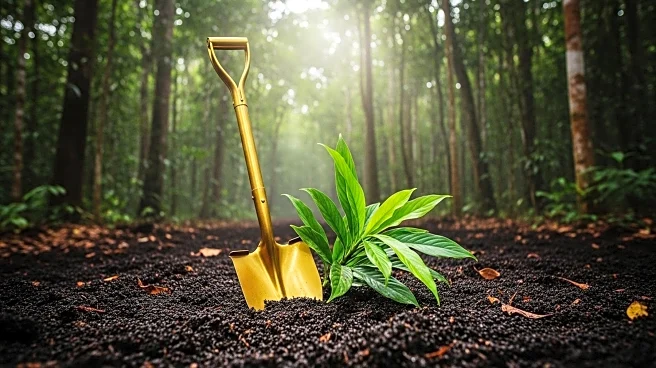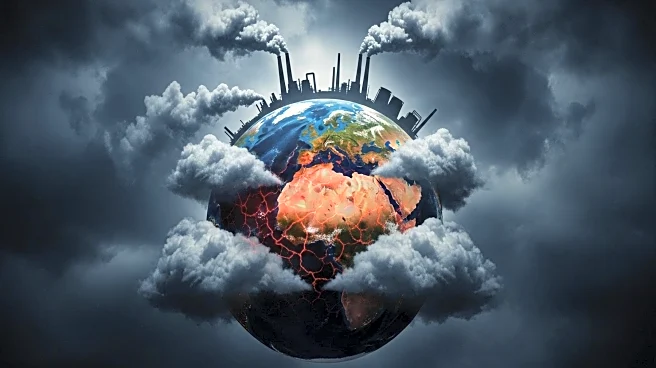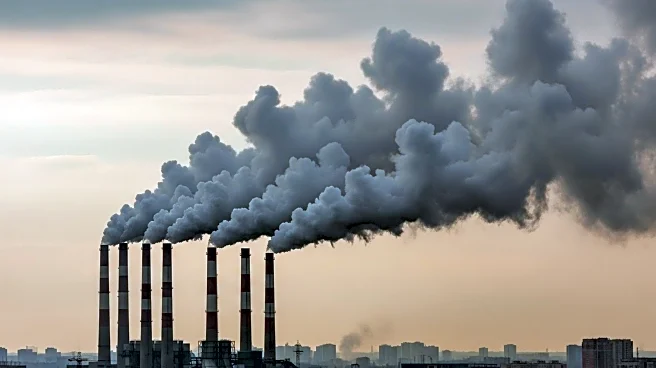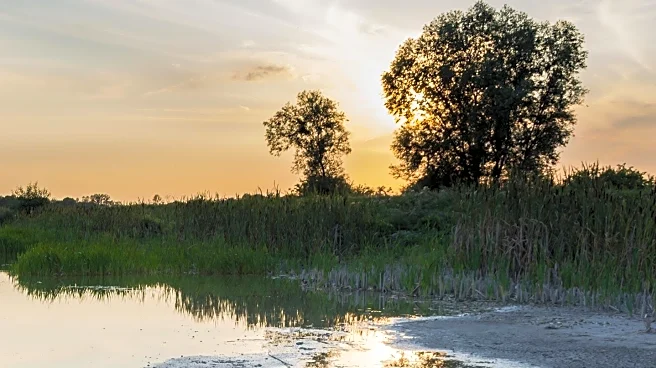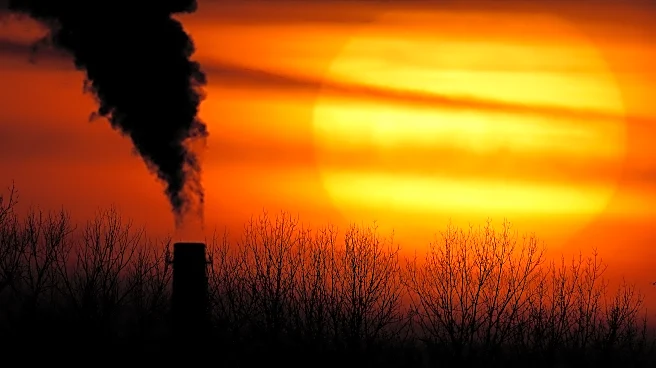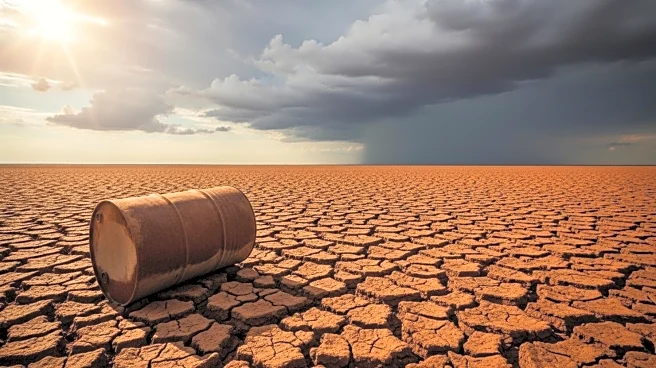What's Happening?
Gold mining activities in Peru have expanded into sensitive wetland areas, specifically peatlands, which are crucial carbon storage ecosystems. These peatlands, composed of waterlogged soils from partially decayed plants, have historically locked away carbon for centuries. However, recent mining operations have disturbed these areas, leading to significant carbon emissions. The study, led by J Ethan Householder from the Karlsruhe Institute of Technology, utilized satellite imagery to track the extent of mining in the Madre de Dios region. The findings reveal that over 550 hectares of peatland have been affected, with a substantial portion of this loss occurring in the last two years. This disturbance has resulted in the release of an estimated 0.2 to 0.7 million tons of carbon, with projections indicating that mining could impact up to 25% of the peatlands by 2027 if current trends continue.
Why It's Important?
The release of carbon from peatlands due to gold mining poses a significant threat to global climate stability. Peatlands are vital carbon sinks, storing more carbon per unit area than other types of forests. The destruction of these ecosystems not only contributes to increased atmospheric carbon levels but also threatens biodiversity and local communities reliant on these environments. The mining activities, often informal and small-scale, provide income for many families but also introduce environmental hazards such as mercury contamination. This situation underscores the complex interplay between economic development and environmental conservation, highlighting the need for sustainable practices and effective regulation to mitigate the adverse impacts on climate and public health.
What's Next?
To address the ongoing environmental impact, the study suggests several priorities that do not require new technology. These include mapping the edges of active peatlands with high resolution, monitoring hotspots in near real-time, and restricting heavy equipment from areas with significant peat depth. Collaboration between local communities and scientific bodies is essential to direct enforcement and restoration efforts to the most vulnerable areas. Maintaining the integrity of peatlands by keeping them wet and shaded is crucial to prevent further carbon emissions. These measures aim to balance the economic benefits of mining with the urgent need to protect critical carbon storage ecosystems.
